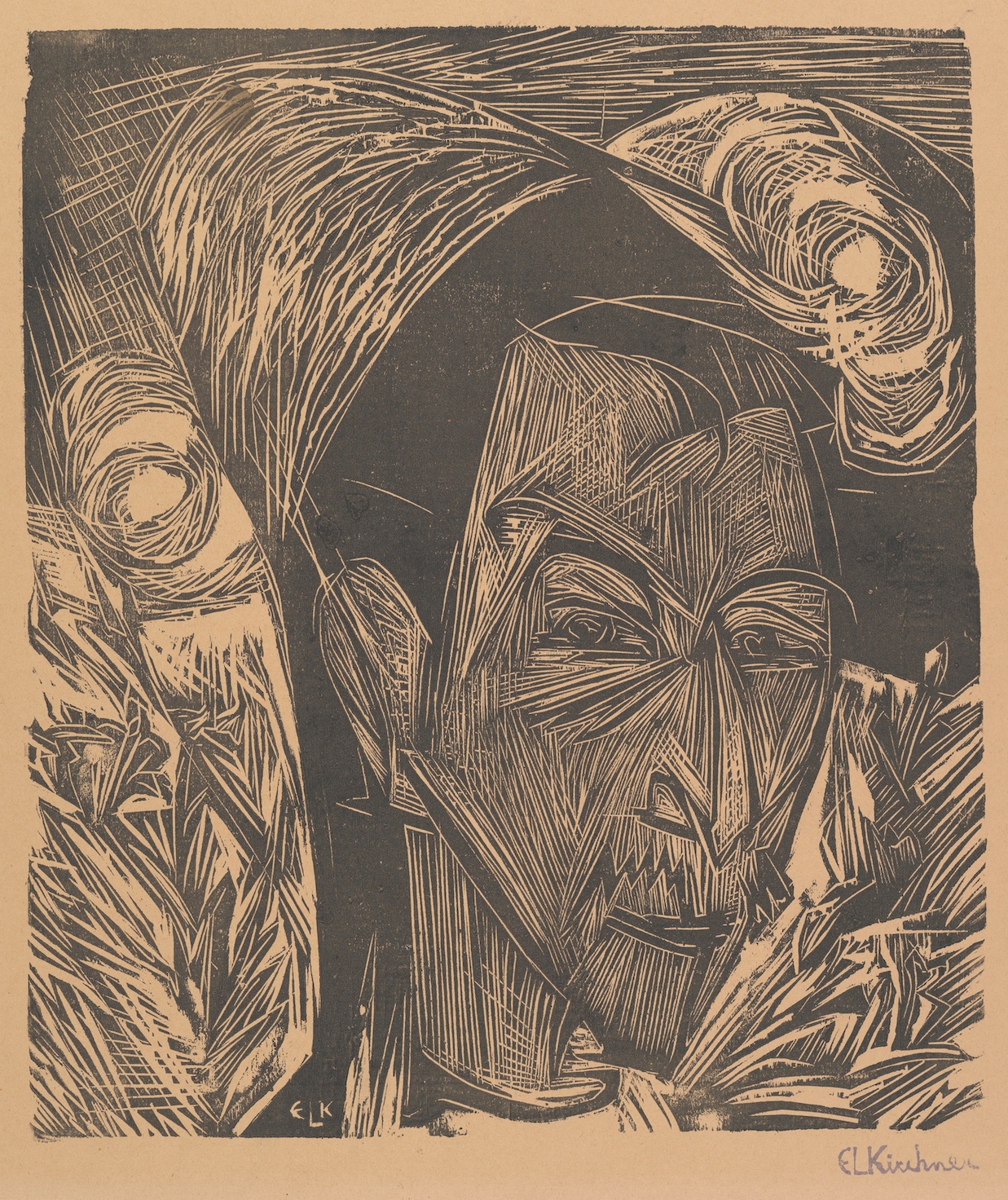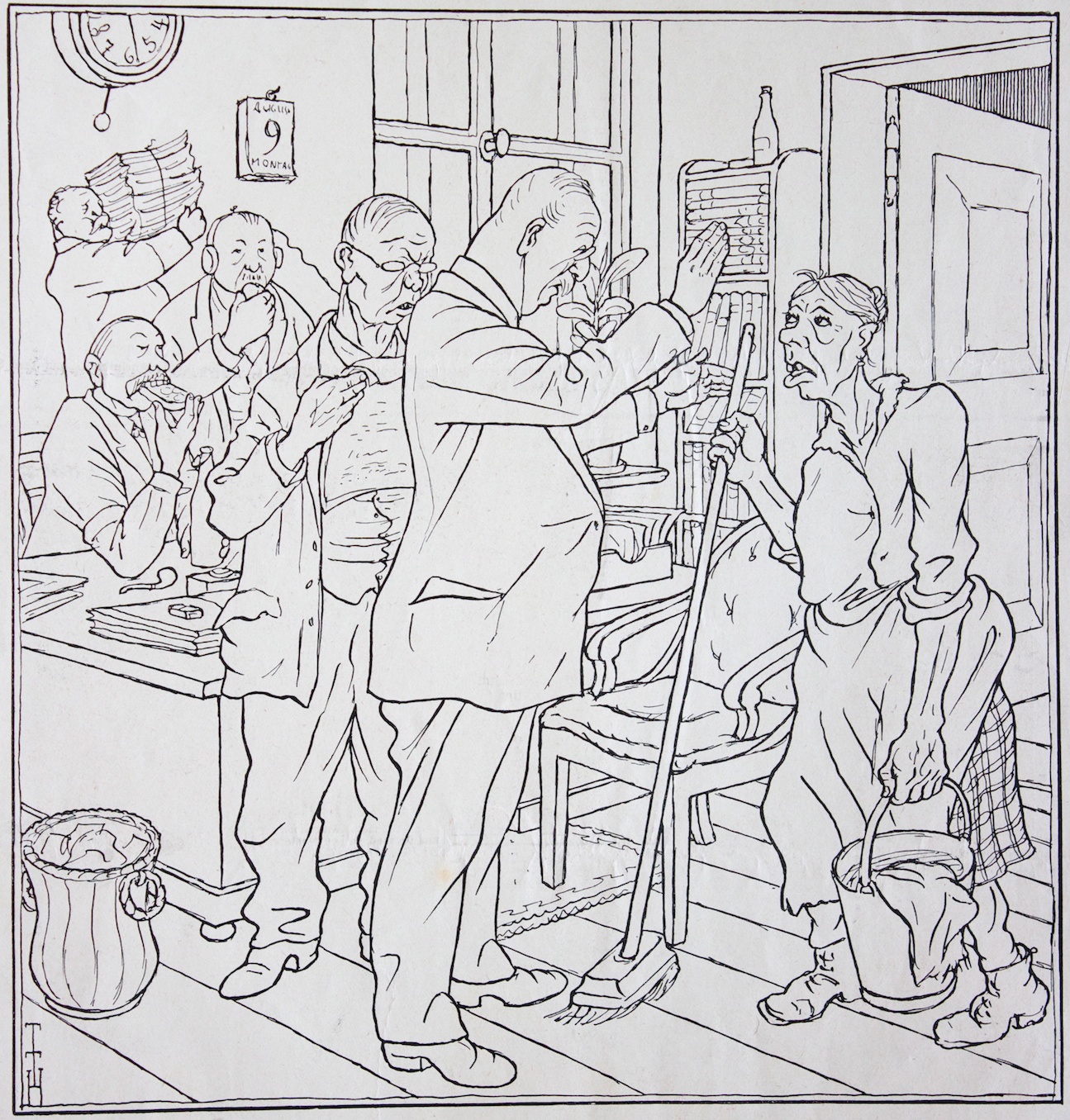Figuration and Ideology,
the avant-garde experiences of the first half of 20th century
Schiele, Grosz, Picasso, Kubin, Klee, Kirchner, Schneider, Heine
An exhibition on the different avant-garde experiences of the first half of the twentieth century with a refined and disenchanted poetic analysis was focused on the manifested complaint of the social and economic inequalities that afflicted the great European masses in a climate of widespread and anachronistic concentration of power by the hands of aristocratic and bourgeois reactionary oligarchies. This prepared the way for the bloody World Wars and the Franco and Nazi dictatorships. The poetic foreshadowing of ideological conflicts that would take place in the following decades represents the deep sense of artistic experience of many avant-garde masters. The cultural and human decadence of a tired middle class, who will defend the reactionary violence, was the subject of semiotic narrative experiments by George Grosz, Thomas Theodor Heine, Ernst Ludwig Kirchner, and Paul Klee. In particular, Klee's work includes pictorial and expressive solutions almost tending to abstraction. The primordial light of Alfred Kubin’s poetry that accompanies a neo-figuration of endless offshoots was a forerunner of the political mass murder as well as the dramatic corporeal physicality of Egon Schiele and Picasso. On the silent background of the programmatic deletion of diversity, Sascha Schneider's dreamy, delicate sensuality stands out. In Kirchner’s works, the suffering of the humble affects the severe and disheveled profiles of an expressionist humanity.
Egon Schiele
Egon Schiele was born in 1890 in Tulln, a small city near Vienna.
In 1907, Schiele met Gustav Klimt who took him under his wings. he took a particular interest in the gifted young Schiele.
Klimt invited Schiele to exhibit some of his works at the 1909 Vienna Kunstschau, where he encountered the work of Edvard Munch, Jan Toorop, and Vincent van Gogh among others. Once free of the constraints of the Academy's conventions, Schiele began to explore the human form, and the human sexuality.
In 1912, Schiele was arrested for seducing a girl below the age of consent. He spent 24 days in prison and there he painted a series of 12 paintings portraying the distress of the prison life.
In 1918, Schiele participated in the Secession’s 49th exhibition in Vienna. He displayed in total 50 works and drew a poster for the exhibition evocation of the ‘Last Supper’, with a picture of himself in the place of Christ.
The sexual undertone in his work was highly criticized during his time, was called vulgar and grotesque but today they are considered as masterpieces.
In 1918, Schiele’s wife, Edith, died of the Spanish flu, which had already killed 20,000,000 people in Europe. When she died she was 6 months pregnant and within three days of her death, Schiele also succumbed to it and died.
Paul Klee
Paul Klee was born in Munchenbuchsee, Switzerland, in 1879 and is considered both a German and a Swiss painter. His highly individual style was influenced by movements in art that included expressionism, cubism, and surrealism. He was also a student of orientalism. Klee was a natural draftsman who experimented with and eventually mastered colour theory, and wrote extensively about it.
In January 1911 Alfred Kubin met Klee in Munich encouraging him to illustrate Voltaires Candide. He did not only befriend Klee but he was also one of his first significant collectors. Klee met, through Kubin, the art critic Wilhelm Hausenstein in 1911, and was in the summer that year foundation member and manager of the Munich artists' union Sema. In autumn he made an acquaintance with August Macke and Wassily Kandinsky, and in winter he joined the editorial team of the almanach Der Blaue Reiter, founded by Franz Marc and Kandinsky.
He and Wassily Kandinsky, both taught at the German Bauhaus school of art, design and architecture. His works reflect his dry humor and his sometimes childlike perspective, his personal moods and beliefs, and his musicality. In 1937 his works were officially condemned by the Nazi regime.
Pablo Picasso
Pablo Picasso was born in 1881 in Málaga.
Spanish expatriate painter, sculptor, printmaker, ceramicist, and stage designer, one of the greatest and most-influential artists of the 20th century and the creator (with Georges Braque) of Cubism. For nearly 80 of his 91 years, Picasso devoted himself to an artistic production that contributed significantly to and paralleled the whole development of modern art in the 20th century.
After the liberation of Paris, Picasso resumed exhibiting his work, notably at the Salon d’Automne of 1944 (“Salon de la Libération”), where his canvases of the preceding five years were received as a shock. That plus the announcement that Picasso had just joined the Communist Party led to demonstrations against his political views in the gallery itself. At the same time, Picasso opened up his studio to both new and old writer and artist friends, including Jean-Paul Sartre, Pierre Reverdy, Éluard, the photographer Brassaï, the English artist Roland Penrose, and the American photographer Lee Miller.
Already in 1943 a young painter, Françoise Gilot, had presented herself at the studio, and within months she became Picasso’s mistress. In 1946 Picasso moved to the Mediterranean with Gilot (with whom he was to have two children, Claude in 1947 and Paloma in 1949). First they stayed near Antibes, where Picasso spent four months painting at the Château Grimaldi. The paintings of that time and the ceramics he decorated at the studio in nearby Vallauris, beginning in 1947, vividly express Picasso’s sense of identification with the classical tradition and with his Mediterranean origins. They also celebrate his new found happiness with Gilot, who in works of that period is often nymph to Picasso’s fauns and centaurs.
Ernst Ludwig Kirchner
Ernst Ludwig Kirchner, was born in 1880 in Aschaffenberg, Bavaria.
German painter and printmaker who was one of the leaders of a group of Expressionist artists known as Die Brücke (“The Bridge”). His mature style was highly personal and notable for its psychological tension and eroticism.
In 1911 the members of Die Brücke moved to Berlin, where Kirchner produced masterful woodcuts for Der Sturm, Germany’s leading avant-garde periodical before World War I. After a mental and physical breakdown in 1915, Kirchner moved to Switzerland. His late landscapes are often allegorical, showing human beings unencumbered by civilization and at peace with nature. Kirchner endured long periods of depression, and after the Nazis declared his work “degenerate” in 1937, he committed suicide.
Alfred Kubin
Alfred Leopold Isidor Kubin, painter, printmaker, illustrator, and writer, was born in Bohemia in the town of Leitmeritz, Austro-Hungarian Empire (now Litoměřice).
In 1896, he attempted suicide on his mother's grave.
In 1898, Kubin began a period of artistic study at a private academy run by the painter Ludwig Schmitt-Reutte, before enrolling at the Munich Academy in 1899, without finishing his studies there.
In 1911, he became associated with the Blaue Reiter group with Kandinsky, Marc, Klee and exhibited with them in the Galerie Der Sturm in Berlin in 1913. After that time, he lost contact with the artistic avant-garde.
He illustrated the works of Edgar Allan Poe, Hoffmann, andDostoevsky, among others. Kubin also illustrated the German fantasy magazine Der Orchideengarten. The best known of Kubin's own books is Die andere Seite (The Other Side) (1909), a fantastic novel set in an oppressive imaginary land. The Other Side has an atmosphere of claustrophobic absurdity reminiscent of the writings of Franz Kafka, who admired Die andere Seite.
From 1906 until his death, he lived a withdrawn life in a small castle on a 12th-century estate in Zwickledt, Upper Austria. In 1938, at the Anschluss of Austria and Nazi Germany, his work was declared entartete Kunst or "degenerate art," but he managed to continue working during World War II.
Sascha Schneider
Sascha Schneider was born in Saint Petersburg in 1870.
During his childhood his family lived in Zürich, but following the death of his father, Schneider, moved to Dresden, where in 1889 he became a student at the Dresden Academy of Fine Arts (Kreuzgymnasium). In 1903 he met best-selling author Karl May, and subsequently became the cover illustrator of a number of May's books including Winnetou, Old Surehand, Am Rio de la Plata. A year later in 1904, Schneider was appointed professor at the Großherzoglich-Sächsische Kunstschule Weimar.
During this period Schneider lived with painter Hellmuth Jahn. Jahn began blackmailing Schneider by threatening to expose his homosexuality, which was punishable under the penal code.
Schneider fled to Italy, where homosexuality was not criminalized at that time. In Italy, Schneider met painter Robert Spies, with whom he traveled through the Caucasus Mountains. He then traveled back to Germany, where he lived for six months in Leipzig before returning to Italy, where he resided in Florence. When the First World War started, Schneider returned to Germany again, taking up residence in Hellerau
(near Dresden). After 1918, he co-founded an institute called Kraft-Kunst for body building. Some of the models for his art works trained here.
Schneider, who suffered from diabetes mellitus, suffered a diabetic seizure during a ship voyage in the vicinity of Swinemünde. As a result, he collapsed and died in 1927 in Swinemünde.
Thomas Theodor Heine
Thomas Theodor Heine was born in Leipzig in 1867.
His name is nowadays associated primarily with the magazine "Simplicissimus", which the artist shaped to a great extent with his caricatures.
The illustrated critiques of social orders, and the monarchy in particular, that he made for the magazine led to a six-month prison sentence in 1898.
In 1922 Thomas Theodor Heine was appointed a regular member of the Prussian Academy of Art in Berlin. He subsequently showed drawings at major exhibitions (Internationale Kunstausstellung, Dresden 1926, Mánes Exhibition, Prague 1934). In later years Heine again devoted himself more intensively to painting but much of this work was destroyed in bombing raids so that it is difficult nowadays to assess his qualities as a painter.
George Grosz
George Grosz was born on July 26, 1893, in Berlin.
He is one of the principal artists associated with the Neue Sachlichkeit (New Objectivity) movement, along with Otto Dix and Max Beckmann, and was a member of the Berlin Dada group. After observing the horrors of war as a soldier in World War I, Grosz focused his art on social critique. He became deeply involved in left wing pacifist activity, publishing drawings in many satirical and critical periodicals and participating in protests and social upheavals. His drawings and paintings from the Weimar era sharply criticize what Grosz viewed as the decay of German society. Shortly before Hitler seized power, Grosz moved to America to teach art and thus avoided Nazi persecution when his work was deemed “degenerate."
During World War I Grosz was an infantryman in the German army. About 1916 he began to portray with biting satire the militarism and ruthlessness of the ruling classes. In Berlin in 1917 he joined the Dada movement, which was essentially a protest against war and exploitation and a call for a new humanism. By 1918 he was acknowledged as Germany's leading social critic in the field of the visual arts, whose pity for the underdog and hatred of capitalism penetrated deep into the consciousness of the postwar mentality in a Germany riddled by misery, inflation, and political failure.

























